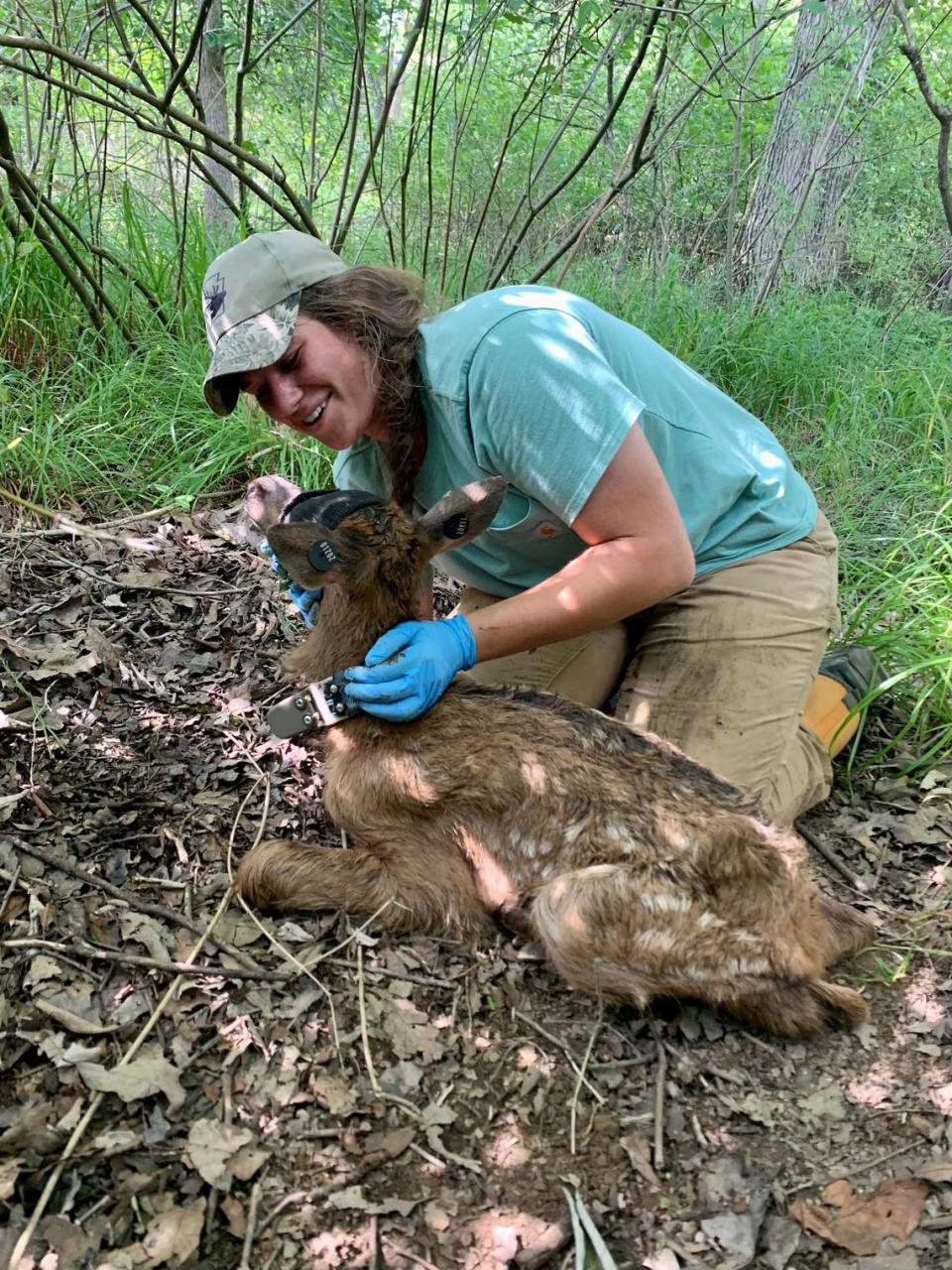Afield: New elk research in PA shows lower calf survival rate than previously thought
A three-year study that was recently completed shows that elk calves in Pennsylvania survive at a much lower rate than previously thought. This new discovery will likely affect future elk management decisions.
The research was the work of former elk biologist aide Avery Corondi, now in a master’s degree program at Penn State. It was done in cooperation with and fully funded by the Pennsylvania Game Commission.
“Game Commission blood test data suggested that elk were being bred later than expected,” Corondi said. “Late-bred cows mean later-born calves, which could potentially affect calf survival. The study was started to document what blood tests were showing about late breeding and to assess if that affected calf survival.”
Data was collected between 2020 and 2022 with a target of 50 elk calves per year. According to Corondi, Pennsylvania’s elk population was divided into a dozen subgroups for the study. One of those subgroups lives in and around State Game Land 100 in northern Centre County, with elk ranging as far south as Yarnell. Different elk were used from each subgroup each year.
“Most field work was a cooperative effort, often done in pairs for safety reasons,” Corondi said. “I was assisted by Commission elk biologist Jeremy Banfield, his aide Makayla Whaling or retired Commission land manager Colleen Shannon, who volunteered many hours to help with the study.”
Cow elk were captured early each year by darting, or using large Clover traps baited with alfalfa. Once a cow was captured, Corondi used ultrasound, as well as other means to verify pregnancy. If pregnant, the cow was fitted with a GPS collar and a vaginal implant transmitter (VIT) was inserted into the cow’s birth canal.
A VIT is expelled when a calf is born and sends out an alert, allowing researchers to get to the location quickly. Once located, calves were GPS collared so that they could be tracked for a year to determine survival.
“We trapped 200 elk to arrive at the 150 pregnant cows — 50 each year — that we needed for the study,” Corondi said. “The technology failed a few times, and we dealt with spontaneous abortions, still births and other complications, but still ended up with 127 calves fitted with GPS collars over the three years.”

Elk calves were born between May 12 and August 10, with one outlier being born on September 18 — five weeks later than any calf in the study. Fifty percent of the calves were born during the first two weeks of June.
“We looked at calf sex, birth weight and time of birth,” Corondi said. “Although time of birth was a factor, it appeared to be biologically insignificant to mortality.”
An earlier study (2005-2009) of Pennsylvania elk showed an 82% survival of calves, with no deaths at all from predation. All documented deaths in that study were of calves less than one week old.
The scope of Corondi’s study broadened as new facts were learned.
“The first things that stood out in the current study were the number of calf deaths, as well as the timing and the causes of those deaths,” Corondi said. “We had spontaneous abortions, five calves dead at birth — one of those appeared to be accidental trauma, and in two additional cases, the cow died while giving birth. These types of calf deaths are relatively undocumented in free ranging elk.”
Collared calves were tracked for one year. If a calf died or was killed, the GPS collar sent out a mortality notice and they rushed to the scene. Corondi and helpers attempted to determine the cause of death. Known causes of mortality in this study included predation, harvest, trauma, disease, malnutrition/tick infestation, starvation due to lack of nursing, and perinatal complications.
Quite different from the results of the previous study, only 63% of the calves survived through their first year, and predation was the leading cause of mortality, with most of it occurring when calves were three to seven weeks old.
Corondi used field evidence, bite marks, necropsy and even DNA analysis to determine what the predator was. As with whitetail fawns, the two major predators on elk calves were bears and coyotes.
“I think it significant that better technology, specifically the VITs, allowed us to document still births, intrauterine deaths and predation,” Corondi noted.
Corondi’s research is likely impacting elk management decisions for 2023. David Stainbrook, Game Commission Deer and Elk Section Supervisor, commented on elk season changes for this fall and beyond.
“The 2023 elk antlerless allocation was lowered from what were record high allocations over the past four years. This was to allow the herd to grow slowly and to better balance our bull to cow ratio,” Stainbrook said. “The reduction would also account for what may potentially be a change in calf survival, based on recent research. If further changes are needed in the future, they can be made after reviewing population trends and harvest data over the next few years.”
Mark Nale, who lives in the Bald Eagle Valley, is a member of the Pennsylvania Outdoor Writers Association and can be reached at MarkAngler@aol.com .


